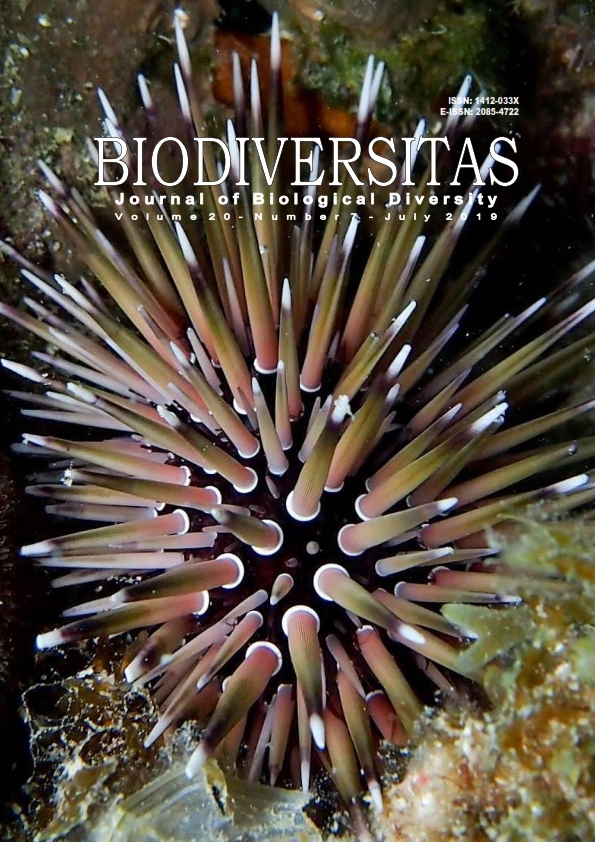Decomposition of tree litter: Interaction between inherent quality and environment
##plugins.themes.bootstrap3.article.main##
Abstract
Abstract. Rachmawati S, Yulistyarini T, Hairiah K. 2019. Decomposition of tree litter: Interaction between inherent quality and environment. Biodiversitas 20: 1946-1952. Litter layers protect forest soils, but may not be appreciated in recreation sites such as the Purwodadi Botanical Gardens (PBG), East Java, Indonesia. We quantified litter decomposition rates in mature stands of three tree species: mahogany (Swietenia macrophylla), angsana/narra (Pterocarpus indicus), and bungur/crape myrtle (Lagerstroemia thorelii). To separate inherent litter quality and stand-level environmental factors (such as microclimate, soil), decomposition rates were quantified for each species across all three stands. A possible interaction on decomposition rates is known as ‘home-field advantage’ (HFA). Litter-weight loss from TSBF-standard litter bags was observed at 0, 1, 2, 4, 8 and 12 weeks after litter bags were installed to estimate the half-life time (t50). We also solicited visitor views on the presence of a thick litter layer on garden floor. Decomposition of angsana (t50=48 weeks) was 15% faster at its ‘own home’ than in ‘neighbors home’. No significant HFA effects were found in bungur/crape myrtle litter that decomposed slower in its home environment, while mahogany decomposition was independent of location. Generally, PBG visitors knew the benefits of litter and were not bothered by its presence; litter increased the attractiveness for visitors to enjoy their happy days under the shade of trees in a ‘tropical autumn’.
